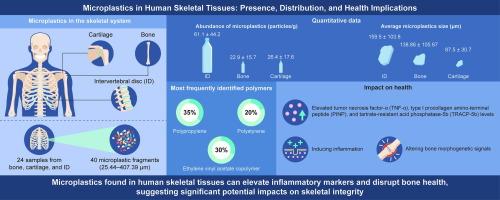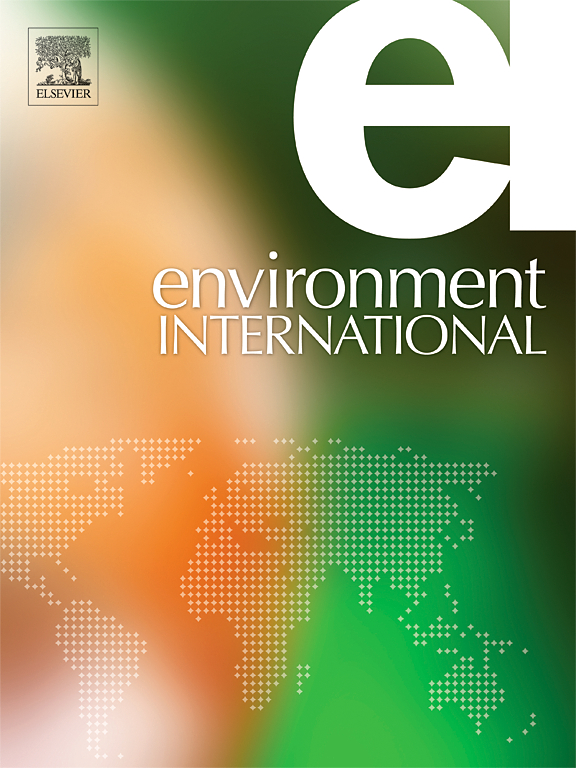Microplastics in human skeletal tissues: Presence, distribution and health implications
IF 10.3
1区 环境科学与生态学
Q1 ENVIRONMENTAL SCIENCES
引用次数: 0
Abstract
Although microplastics have been detected in human blood, placenta and other tissues In this study, for the first time, we characterized the presence and variation of microplastic deposition patterns in three human skeletal tissues, namely the bone, cartilage, and intervertebral discs. Forty microplastic fragments were observed in 24 samples from the bone, cartilage, and intervertebral disc, ranging from 25.44 to 407.39 μm in diameter. The deposition abundance of microplastics in the human intervertebral disc (61.1 ± 44.2 particles/g) was higher than those in the bone (22.9 ± 15.7 particles/g) and cartilage tissue (26.4 ± 17.6 particles/g). The average sizes of microplastics in intervertebral discs (159.5 ± 103.8 μm) and bone (138.86 ± 105.67 μm) were larger than that in the cartilage tissue (87.5 ± 30.7 μm). The most frequently identified polymers were polypropylene (35 %), ethylene vinyl acetate copolymer (30 %), and polystyrene (20 %). The in vivo experiment suggested that microplastics invaded the bone, cartilage, and intervertebral discs through blood circulation after 4 weeks of exposure. Serum levels of tumor necrosis factor-α (TNF-α), Type Ⅰ procollagen amino-terminal peptide (PINP), and tartrate-resistant acid phosphatase-5b (TRACP-5b) were elevated compared with those in the control group (P < 0.05). Our study suggests that microplastics invade the bone, cartilage, and intervertebral discs through the blood supply, causing distinct patterns of microplastic accumulation in these regions. Microplastic invasion can affect skeletal health by influencing the expression of inflammatory and bone morphogenetic cytokines. These findings provide insights into investigating the impact of microplastics on human skeletal health.

求助全文
约1分钟内获得全文
求助全文
来源期刊

Environment International
环境科学-环境科学
CiteScore
21.90
自引率
3.40%
发文量
734
审稿时长
2.8 months
期刊介绍:
Environmental Health publishes manuscripts focusing on critical aspects of environmental and occupational medicine, including studies in toxicology and epidemiology, to illuminate the human health implications of exposure to environmental hazards. The journal adopts an open-access model and practices open peer review.
It caters to scientists and practitioners across all environmental science domains, directly or indirectly impacting human health and well-being. With a commitment to enhancing the prevention of environmentally-related health risks, Environmental Health serves as a public health journal for the community and scientists engaged in matters of public health significance concerning the environment.
 求助内容:
求助内容: 应助结果提醒方式:
应助结果提醒方式:


